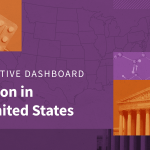That is the topic of a paper by Katherine Wagner (2022). The paper won the 2025 American Economic Journal: Economic Policy best papers award (despite being published 3 years ago). In her paper, Dr. Wagner uses data from 20 US Atlantic and Gulf Coast states between 2001 and 2017. Housing valuation data come from Zillow Transaction and Assessment Database (ZTRAX)
These states account for 83% of flood insurance policies written in the US. Most flood insurance policies in the US are underwritten by the public body known as the National Flood Insurance Program (NFIP); NFIP also creates Flood Insurance Rate Map (FIRM), which displays geographical floodplains in each area, and also delineates special hazard areas and risk premium zones.
The author’s econometric strategy relies on a difference-in-difference strategy driven by Congressional reforms in 2012 and 2014. The specific reforms are the Biggert-Waters and HFIAA reforms.
Biggert-Waters Flood Insurance Reform Act of 2012: mandated premiums increases of 25 percent per year beginning in 2013 for nonadapted primary residences that are sold, paying subsidized rates due to grandfathering, or classified as “severe repetitive loss” properties. Homeowner Flood Insurance Affordability Act of 2014 (HFIAA): extends the rate increase to all subsidized nonadapted residences (i.e., including those that were initially unaffected by Biggert-Waters). Premiums will increase each year until they reach actuarially fair levels, though the HFIAA limits this annual rate increase to between 5 percent and 18 percent for all residential properties except “severe repetitive loss”
These reforms are used to estimate homeowners’ willingness to pay and cost curves as the Biggert-Waters and HFIAA reforms impacted the price of flood insurance, for certain houses but not others depending on whether the house was a nonadapted primary residence or not.
Using this approach, the authors find that:
throughout high-risk flood zones in the eastern United States, the mean price of flood insurance is only about two-thirds of homeowners’ own expected payouts, but over 40 percent of homeowners are uninsured…only about half of high-risk homeowners are willing to pay an amount equal to their expected payout for a flood insurance contract.
In most insurance markets, individuals are risk averse and are willing to pay more than the actuarially fair value; in flood insurance, however, it seems that individuals are risk loving. Could market failures explain what is happening? Wagner claims that standard insurance market failures such as adverse selection, moral hazard, public bailouts, and credit constraints do not seem to be a major issue for the flood insurance market. However, there is some adverse selection:
natural disaster insurance markets are adversely selected because homeowners’ willingness to pay and cost are positively correlated with observables (i.e., house elevation) that the
insurer does not price efficiently.
One reason could be that individuals underestimate their true flood risk or discount of tail events. This is odd because the Kahneman and Tversky prospect theory states that individuals do mis-estimate the probability of rare events, but they typically over-estimate the likelihood of very rare events.
Nevertheless, the study is interesting throughout. You can read the full paper here.







